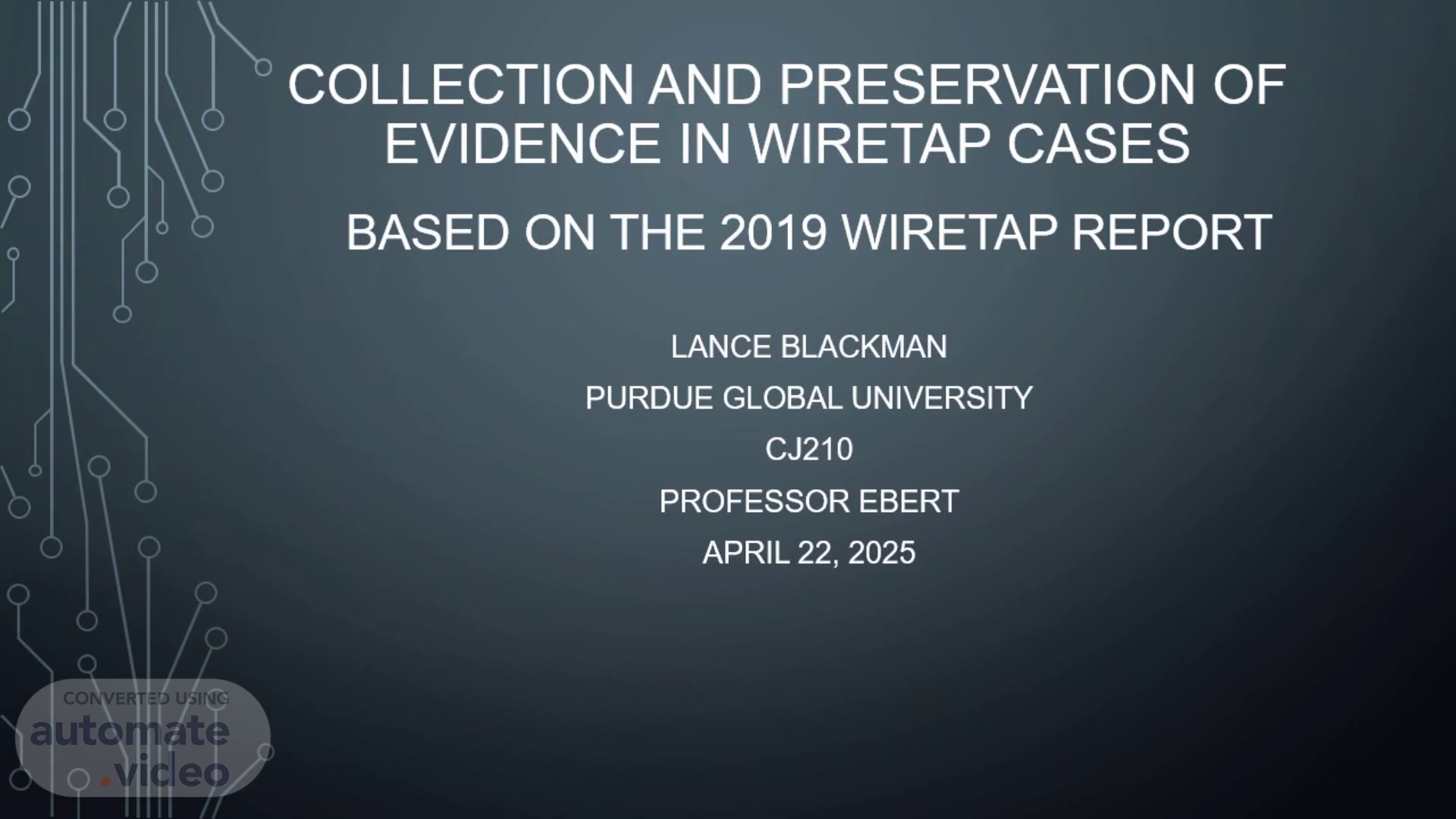
Collection and Preservation of Evidence in Wiretap Cases
Scene 1 (0s)
[Audio] Collection And Preservation of Evidence in Wiretap Cases Based on the 2019 Wiretap Report..
Scene 2 (10s)
[Audio] Three Main Criminal Offences Using Wiretaps: The 2019 report shows that drug cases were the main reason for wiretaps, making up 39% of applications. Conspiracy cases were second at 13%, and homicide/assault cases were third at 4%. When all drug-related offenses are combined, they account for 76% of wiretap applications. (United States Courts, 2019)..
Scene 3 (39s)
[Audio] Surveillance activities can be classified into three primary categories: wire communications monitoring, oral listening, and electronic communication. Wiretaps on phone devices represented 53% of all surveillance intercepts, with cell phones being the primary target. Oral surveillance involves monitoring face-to-face dialogues, whereas electronic surveillance focuses on capturing text messages and app interactions. The surveillance data reveals that 94% of wiretap operations focused on portable devices like cell phones..
Scene 4 (1m 15s)
[Audio] In wiretap cases, evidence collection starts with getting court approval, then setting up the technical equipment and monitoring communications. The evidence is collected through digital recording, transcription, and capturing details like time and phone numbers. To preserve this evidence, investigators maintain a strict chain of custody, use encryption to protect the data, and store everything securely with detailed documentation..
Scene 5 (1m 46s)
[Audio] Comparing Evidence Handling: Wiretaps versus Physical Crime Scenes: Wiretap and physical crime scene evidence are handled very differently. Wiretap evidence is digital, collected over extended periods (sometimes months), and can be gathered remotely. A major challenge is encryption, also known as end-to-end encryption. End-to-end encryption is designed so that only the sender and receiver of messages can access their contents—governments, tech companies, and telecom providers can't snoop on what people are saying. Those privacy and security guarantees have made encryption a target for law enforcement and governments for decades, because officials claim that the protection makes it prohibitively difficult to investigate urgent threats such as child sexual abuse material and terrorism. ( Burgess, 2025) Physical evidence, however, is tangible, usually can only be collected once, requires investigators to be physically present, and can be damaged or contaminated if not handled properly.].
Scene 6 (2m 54s)
References. Burgess, M. (2025). A New Era of Attacks on Encryption Is Starting to Heat Up https://www.wired.com/story/a-new-era-of-attacks-on-encryption-is-starting-to-heat-up/ United States Courts (2019). Wire Tap Report 2019 https://www.uscourts.gov/data-news/reports/statistical-reports/wiretap-reports/wiretap-report-2019.